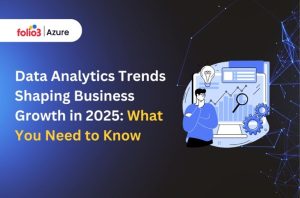Table of Contents
ToggleMicrosoft Copilot is not just transforming workflows; it’s also driving measurable productivity and time savings across organizations. Now, it is showing concrete, independently validated benefits, far beyond Microsoft’s own reports.
In a landmark UK government trial involving over 20,000 civil servants, users of Microsoft 365 Copilot saved an average of 26 minutes per day, amounting to nearly two weeks of work time per year per person. In another survey, over 70% of participants reported spending less time on mundane tasks, and 82% said they wouldn’t want to go back to working without it.
Separately, in a broader real‑world experiment involving more than 6,000 knowledge workers across 56 firms, participants using generative AI tools like Copilot spent 30 minutes less per week on email and completed documents 12% faster, with many users continuing to use the tool regularly throughout the six‑month period.
These independent findings offer strong evidence of real-world impact. Microsoft Copilot’s ability to free up time and streamline tasks isn’t just aspirational, it’s already reshaping work across sectors. In this blog, we’ll explore the top 10 benefits of Microsoft Copilot, including how it’s transforming accessibility with AI, boosting creativity and compliance, and supporting accessible, inclusive digital workplaces.
What is Microsoft 365 Copilot?
Microsoft 365 Copilot is an AI assistant integrated throughout the Microsoft 365 suite (Word, Excel, PowerPoint, Outlook, Teams, and more). It uses a large language model (LLM), the same kind of AI behind ChatGPT combined with the Microsoft Graph (your emails, files, meetings, etc.) to provide intelligent assistance in the context of your work. In practical terms, Copilot lets you use natural language prompts to do things that used to require time and multiple tools.
For example, you can ask Copilot in Word to draft a proposal based on your meeting notes, or ask Copilot in Excel to analyze sales data and create a chart, all by just describing what you need. Copilot understands your command and generates the content or answer instantly, which you can then refine. It’s like having a skilled AI assistant for Microsoft 365 users one that is available 24/7 within your Word documents, Outlook inbox, Teams meetings, and more.
Leveraging Copikot to its full potential can be a game changer for your business. So, If you’re exploring how to adopt Copilot across your workflows securely and at scale, our Microsoft Copilot consulting services can help you plan, implement, and optimize your AI journey.
Core Features of Microsoft 365 Copilot
The core features of Microsoft Copilot give it these powers. Here’s how Copilot works under the hood:
- Integration across Microsoft 365 apps: Copilot is built directly into the Office ribbon and sidebars. It lives in Word, Excel, PowerPoint, Outlook, Teams, OneNote and more, so you can summon AI help without leaving your document or chat.
- Natural language AI assistance: Copilot understands plain-English prompts. You can ask it to draft emails, summarize documents or generate ideas with simple commands. This multimodal AI makes interactions feel personal and intuitive.
- Generative content creation: Copilot can produce first drafts, outlines, charts or presentations on demand. In Word and Outlook it can draft or refine text, in PowerPoint it can convert a document outline into slides with speaker notes, and in Excel, it can turn data into charts and insights.
- Data analysis and insights: Copilot taps into your business data (via Microsoft Graph) to spot trends and summaries. In Excel, it automatically generates formulae, identifies patterns, and suggests visualizations. In Teams or Word, it can summarize meeting transcripts or long emails and highlight key points.
- Collaboration and communication: In Teams, Copilot can recap meetings, list action items, and answer questions about conversations. It keeps everyone on the same page by summarizing chat threads and email threads across channels. This AI-enhanced communication means fewer misunderstandings and better alignment.
- Learning and personalization: Copilot learns from each user’s style and needs. It adapts to your writing tone and priorities, offering suggestions tailored to your role. It can serve as a personal learning aid, guiding you through complex tasks step-by-step.
- Enterprise-grade security and compliance: Copilot is built on Microsoft’s secure infrastructure. It respects tenant boundaries and follows strict privacy controls. Data never leaks out of your tenant, and features like two-factor authentication ensure safe use.
Together, these core features embedded AI across apps, natural language interface, powerful generation and analysis, plus secure design create an intelligent assistant for Microsoft users. Copilot effectively removes technical friction and supports ease of use with AI. It’s designed not as a separate tool but as a helpful companion embedded in the everyday tools people already know.
10 Best Microsoft Copilot Benefits
Leveraging these features, Microsoft Copilot delivers numerous real-world benefits. Here are the top 10 user-centric advantages of deploying Copilot in your organization:
1. Time-Saving Efficiency and Productivity
Copilot automates repetitive and routine tasks, freeing users to focus on higher-value work. Tasks like drafting emails, summarizing long documents, and populating reports can be done in seconds. Microsoft found that 67% of users said Copilot saved them time to focus on more important work.
In practice, teams use Copilot to locate documents, compile data, and summarize notes faster than ever. For example, HR teams have Copilot auto-generate first drafts of policies and onboarding docs, slashing the hours spent on initial copywriting. This boost in productivity means projects move quickly and employees accomplish more in their day.
2. Enhanced Creativity and Content Quality
With Copilot handling the groundwork, teams can unleash creativity. Copilot acts as a brainstorming partner: it suggests new ideas, outlines, and phrasing that inspire innovative thinking. Whether drafting a marketing plan or creating a presentation, Copilot can pull in relevant industry trends and past project data to spark fresh concepts.
Many users report that Copilot improves the quality of their output, as Microsoft notes 68% of users found it improved work quality. Writers get help finding the right words; designers receive layout suggestions; strategists see possible scenarios. In short, Copilot’s generative AI gives teams a jumpstart on creativity, allowing more time for polishing and strategy.
3. Data-Driven Insights and Decision Support
Copilot leverages your organization’s data to surface insights that inform decisions. In Excel, it can analyze sales figures to highlight trends or forecast demand. In Power BI or Dynamics, Copilot can query datasets in natural language and instantly present graphs or summaries.
The result is that managers get data-driven recommendations without needing a data scientist. When paired with robust data science and AI capabilities, Microsoft Copilot helps unlock powerful predictive insights and drives smarter, faster decisions across the enterprise.
For instance, a retail team might ask Copilot which products are trending, and receive a chart plus narrative explanation, enabling faster stocking decisions. By turning complex data into understandable insights, Copilot empowers even non-technical users to make smarter decisions based on the data they already have.
4. Seamless Collaboration and Communication
Copilot brings everyone onto the same page. In Teams and Outlook, it summarizes discussions and email threads so team members don’t waste time catching up. It can highlight action items after a meeting and even suggest follow-up emails. This real-time coordination means less context-switching: employees spend less time digging through inboxes or chat logs.
Copilot also enables AI-enhanced communication by helping craft messages in the appropriate tone or language. For global teams, Copilot’s language capabilities (including real-time translation) help remove language barriers.
For example, an international firm noted that Copilot’s translation abilities made their multilingual meetings more productive. By smoothing communication, Copilot improves teamwork and reduces errors from miscommunication.
5. Personalized Assistance and Learning
Each user gets tailored help. Copilot learns personal preferences and adapts its suggestions accordingly. It can simplify complex reports into bite-sized summaries, step people through new software tools, or generate quick cheat-sheets for unfamiliar tasks.
This personalized assistance is especially valuable for skill development. Neurodiverse or new employees have reported that Copilot makes learning less overwhelming by breaking down tasks and providing instant feedback.
Over time, Copilot can act like a tutor, boosting employees’ skills and confidence. In one study, 76% of neurodiverse respondents said Copilot helped them thrive more at work. By guiding users in their own workflow, Copilot effectively raises the skill floor and democratizes expertise within the team.
6. Accessibility and Inclusivity (Breaking Barriers)
One of Copilot’s most transformative benefits is enhancing accessibility with AI. From the start, Microsoft designed Copilot with assistive features. Recent updates have added voice and vision capabilities that make the tool more inclusive.
Copilot can now speak to you (reading documents or headlines aloud) and describe images or on-screen content in natural language. It supports speech-to-text and real-time language translation, bridging gaps for users with disabilities or those who speak different languages.
This cognitive accessibility means people with vision or mobility impairments, dyslexia, ADHD, or language barriers can use Microsoft 365 more independently. By removing traditional barriers (slow typing, language hurdles, complex interfaces), Copilot empowers a wider range of users to fully participate and contribute in digital workspaces. In diversity, equity, and inclusion (DEI) terms, Copilot is transforming accessibility with AI, leveling the playing field and fostering belonging.
7. Streamlined Workflows and Process Optimization
Copilot integrates into existing processes to eliminate manual drudgery. Instead of juggling multiple tools, employees use Copilot right inside the apps they use every day. It automatically pulls data from emails, chats, and files to speed up tasks.
For example, after a meeting, Copilot can automatically create task lists in Planner or To Do, assigning actions to people with due dates. By doing this behind the scenes, Copilot ensures nothing falls through the cracks. It also reduces errors and accelerates entire business processes.
Moreover, the net effect is cost savings through optimization as one analysis found organizations save on average 17% of costs by automating tasks with AI. Even small teams benefit: Copilot handles routine back-office work (scheduling, data entry, reminders), freeing staff from repetitive duties. This efficiency means projects complete faster and with fewer hires required, effectively lowering operating costs.
8. Enhanced Creativity and Innovation (for All)
Beyond productivity, Copilot spurs innovation. By providing rich context and creative inputs, it helps teams explore new ideas. Marketing or R&D teams can use Copilot to analyze market data and suggest campaign concepts. Developers can ask Copilot to draft pseudocode or explain new programming concepts. With Copilot, every employee has an AI co-pilot that extends their capabilities.
This broadens the scope of what teams can attempt: small businesses can act like big enterprises by quickly prototyping plans with AI help. Over time, employees become more creative themselves because Copilot handles the mundane and suggests novel approaches. In short, Copilot makes innovation more accessible across the organization, not just in the IT department.
9. Robust Security and Compliance
While Copilot introduces advanced AI, it does not compromise security. Built on Microsoft’s trusted cloud and Zero Trust principles, Copilot follows the same enterprise safeguards as the rest of Microsoft 365. Data privacy is ensured: Copilot only accesses the data you have rights to (it doesn’t mix your data with others or train on tenant data beyond your organization). All user interactions are logged and governed by existing compliance policies.
This means teams can confidently adopt AI without fear of leaks or compliance breaches. For regulated industries (finance, healthcare, government), this is a major benefit: they can harness AI while meeting strict standards. In practice, companies have applied Copilot to sensitive tasks (like SOP documentation or patient data summaries) because it adheres to the same data controls as their Office 365 data.
10. Future-Proofing and Scalability
Finally, Copilot readies organizations for the future of AI accessibility and work. As AI continues to redefine how businesses operate, organizations are turning to AI-powered solutions to streamline operations, automate processes, and scale intelligently across departments.
Microsoft’s continuous AI roadmap, including Copilot Actions, specialized agents, and expanding platform connectors, means businesses using Copilot today will easily adopt tomorrow’s innovations.
In the long run, Copilot can be customized via Copilot Studio to create domain-specific assistants, and new Copilot+ devices will further streamline access. As a result, organizations that embrace Copilot gain a competitive edge: they can scale AI across teams and adapt quickly to new AI-driven workstyles. In essence, using Copilot is a form of future-proofing — it equips users with the most advanced AI features in Microsoft 365 and prepares them for the next wave of AI capabilities.
Future Expectations from Microsoft Copilot
Microsoft is rapidly extending Copilot’s capabilities to make AI even more actionable. Looking ahead, we can expect a new generation of features that empower everyone:
- Copilot Actions for Task Automation: Microsoft is rolling out fill-in-the-blank Copilot Actions (currently in preview) that let users automate everyday workflows with simple prompts. For example, Copilot Actions can automatically compile weekly reports, send meeting summaries, or create follow-up tasks all based on natural language commands.
- Smart AI Agents: New AI assistants (“agents”) are being embedded into apps. Agents in SharePoint can answer questions using your site’s documents, while a Teams Interpreter agent will soon provide real-time speech-to-speech translation in meetings. An Employee Self-Service agent (preview) will help answer common HR or IT questions through Business Chat.
- Expanded Voice and Vision: Copilot’s voice-activated features will grow richer and support more languages. Future updates will continue to improve Copilot Vision (AI-powered image/text understanding) and voice interactions, making the assistant smarter and more conversational.
- Copilot Studio and Customization: Microsoft is investing in Copilot Studio and Azure AI Foundry to let businesses build custom Copilot applications. Administrators will be able to train Copilot with proprietary data and launch tailored AI solutions – accelerating the pace of innovation.
- Integration and Devices: We’ll see deeper integration of Copilot into Windows (e.g. Copilot+ PCs) and peripheral devices, so AI is available wherever work happens. For instance, Windows 365 Link (“Copilot+ PC”) is designed to deliver AI capabilities on a secure thin-client device.
- Trustworthy AI and Analytics: To support responsible AI use, Microsoft is adding built-in AI reporting and risk assessment tools. Organizations will get better visibility into Copilot’s usage and safety, helping maintain compliance as AI use grows.
These enhancements point toward a future where AI and assistive technology are woven into every aspect of work. Copilot’s ongoing evolution means users can look forward to even more personalized, inclusive, and powerful AI assistants in the workplace.
Conclusion
Microsoft Copilot is more than just a new feature; it’s a transformative AI companion for the modern workplace. In summary, the benefits of Microsoft Copilot are manifold. From unlocking hidden insights in data to breaking down communication barriers, Copilot empowers organizations to do more, faster, and with greater inclusion.
As the technology matures, its role as an AI assistant for Microsoft users will only deepen, solidifying Copilot as an indispensable part of the digital workplace ecosystem.



